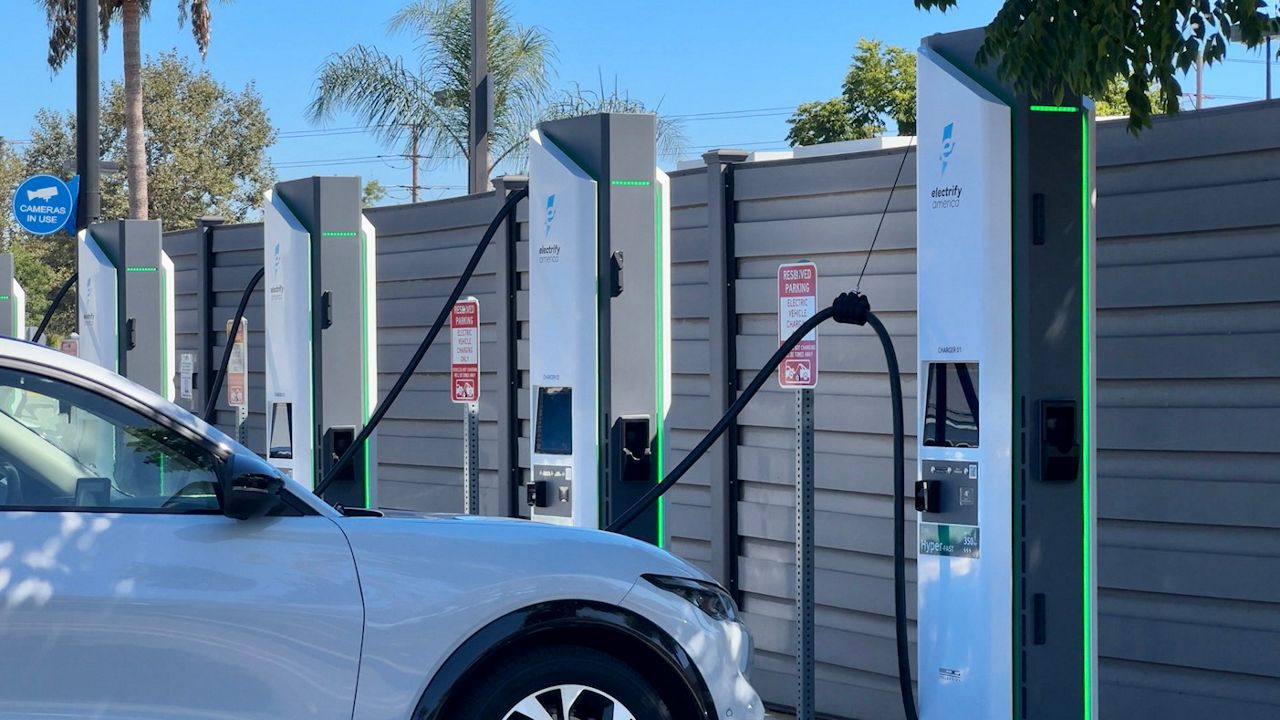Infra
California facing an uphill battle to build out EV charging infrastructure

BURBANK, Calif. — The promise of a greener future is hitting a major roadblock in California and the U.S. As more Americans make the switch to electric vehicles, the lack of accessible charging stations is leaving many frustrated and reconsidering their decision.
At one supercharging station in Burbank, EV drivers waited in long lines that wrapped around a parking lot, and maintenance crews worked on at least two chargers.
ZeAndre Simpson was among the dozens who were waiting.
“I’m at 2% right now,” he said. “Six miles. And when I first got here, I think I was on at least 18 miles,” he said.
Simpson made the switch to electric a few years ago but still owns a gas-powered vehicle, too, just in case.
“I feel like EV has been around for a while, so I don’t know why companies aren’t catching up,” Simpson said. “There’s a lot of cars on the road right now. There should be chargers like there are gas stations.”
While the number of electric vehicles on the road is growing, the infrastructure needs to catch up.
According to the California Energy Commission, the Golden State needs one million EV chargers by 2030 to meet demand. Right now, it has roughly 100,000.
Stanford professor Bruce Cain has been studying environmental policy for the last decade. “There’s a lot of bureaucracy that I think was kind of underestimated by the people setting these goals,” Cain said.
Cain says the first challenge is funding. Building a nationwide network of chargers is expensive. Each portal can cost 120 thousand dollars or more to install and maintain.
California recently invested nearly two billion dollars to build out 40,000 chargers, but Cain says more is needed.
The second hurdle? Regulatory red tape.
The permitting process to install new chargers is often slow and cumbersome.
But Cain says these are challenges that lawmakers can overcome by being forthcoming.
“We have to just be as aggressive as the world will allow us, and we have to open about all the obstacles we are facing,” said Cain.
One of those obstacles? Consumer confidence.
According to a global mobility survey from McKinsey & Company, 46% of e-v drivers say they’re likely to switch back to a gas-powered car.
Zeandre says no buyer’s remorse for him, however, because he’s still saving money on gas. This, as his turn finally comes up to charge.
“Here we go, now I’m going to be here for another 20 minutes,” Simpson said.
Simpson is powering up for the rest of the day while California works on powering up for 2035.









